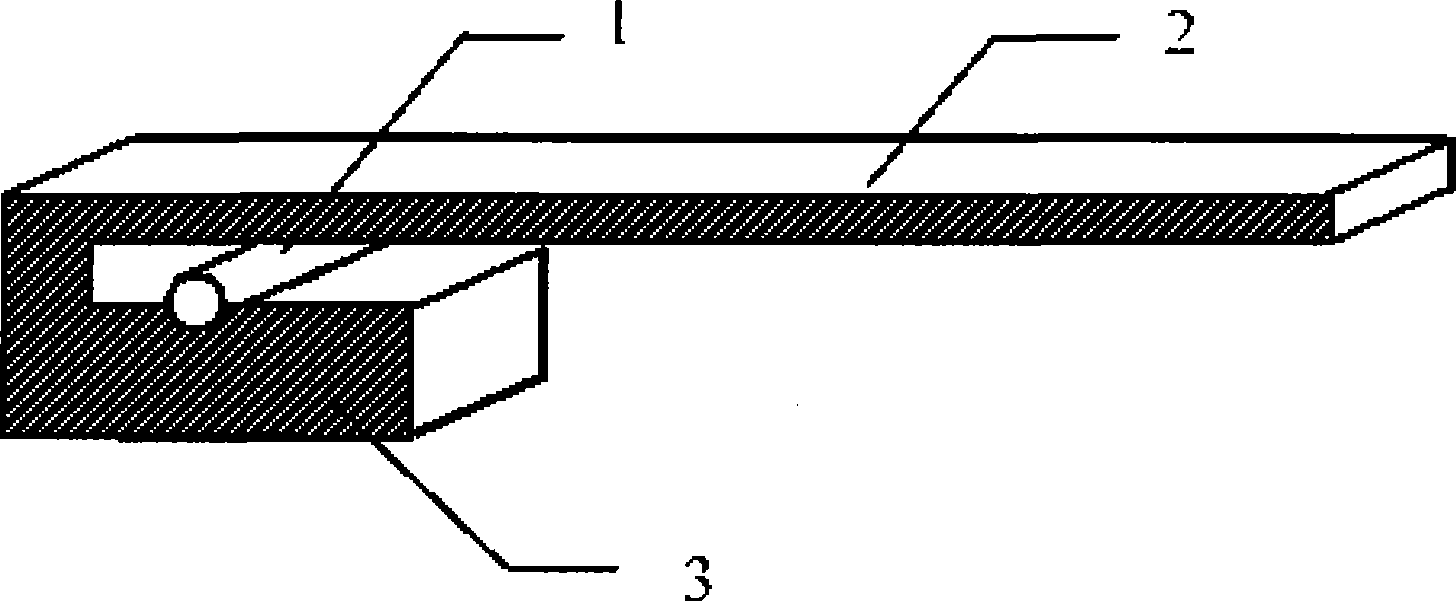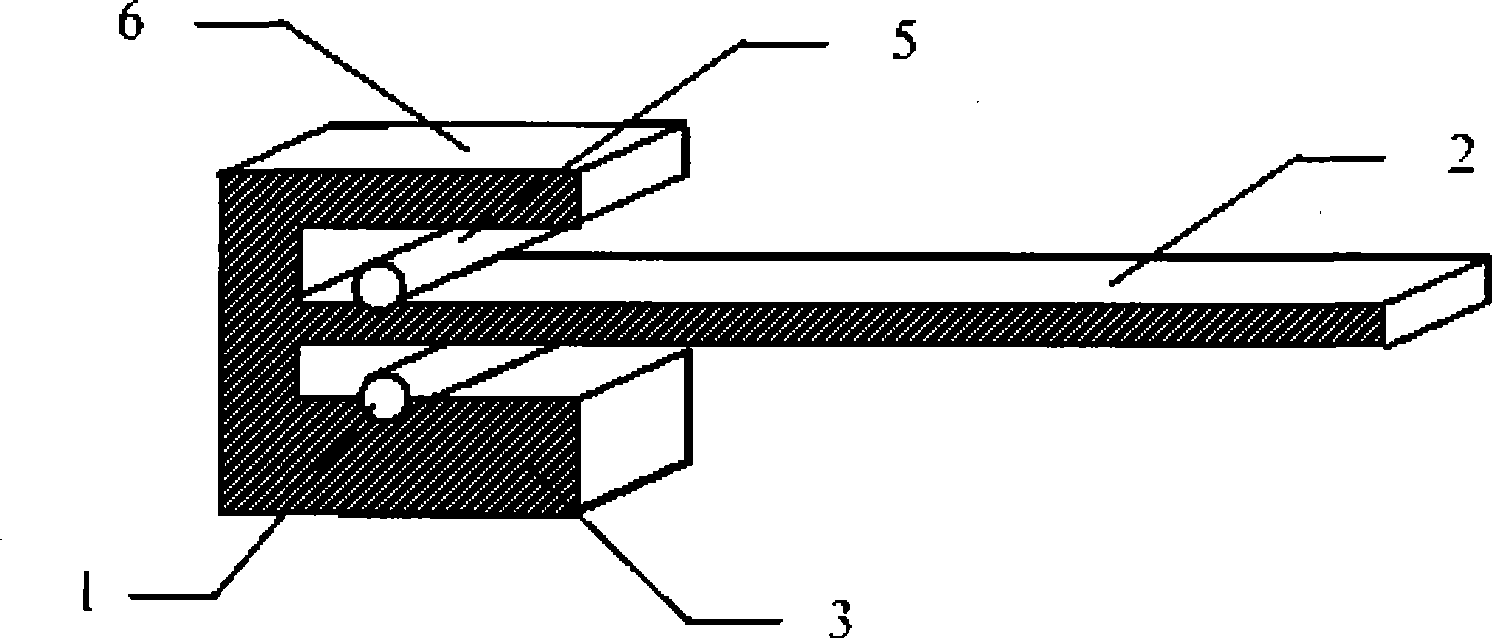Displacement or acceleration sensor
An acceleration sensor and displacement technology, applied in the direction of acceleration measurement, instruments, and measuring devices using inertial force, can solve the problems of high demodulation costs, etc., and achieve the effects of mature demodulation technology, removal of temperature crosstalk, high sensitivity and precision
- Summary
- Abstract
- Description
- Claims
- Application Information
AI Technical Summary
Problems solved by technology
Method used
Image
Examples
Embodiment 1
[0023] figure 1 In the above, the first fiber laser 1 is placed between the cantilever beam 2 and the first platform 3, and is in contact with the two. The material of the cantilever beam 2 can be: plastic, polymer material, metal plate, etc., when the end is subjected to force, displacement will occur, and at the same time, mechanical pressure will be exerted on the fiber laser below it. In this embodiment, a distributed Bragg reflective fiber laser (DBR fiber laser) is used, operating in a single longitudinal mode with dual polarization states, and the cantilever beam is made of plastic polymer. Those skilled in the art should understand that when the fiber laser is subjected to lateral pressure, the birefringence effect produced by the fiber will cause the polarization beat signal output by the fiber laser to change.
[0024] The relationship between the displacement (deflection) of the end of the cantilever beam and the pressure on the optical fiber is given by the follow...
Embodiment 2
[0035] An acceleration sensor such as Figure 4 , the same characteristic structure of the above-mentioned displacement sensor can also be used to measure the acceleration parameter. When the cantilever beam 2 and the first fiber laser 1 are in an acceleration environment, the first fiber laser 1 will be subjected to the reaction force of the cantilever beam, thereby changing the polarization beat frequency signal of the output light of the first fiber laser 1 . By measuring the change of the polarization beat frequency signal, the environmental acceleration parameter can be obtained.
[0036] Those skilled in the art should understand that although the cantilever beam has a certain amplification effect as an acceleration sensor, since the acceleration is related to the mass, in order to obtain a larger inertial force, an inertial mass 4 can be fixed at the end of the cantilever beam to increase the sensitivity of the sensor , so this embodiment fixes a metal copper block at ...
PUM
 Login to View More
Login to View More Abstract
Description
Claims
Application Information
 Login to View More
Login to View More - R&D
- Intellectual Property
- Life Sciences
- Materials
- Tech Scout
- Unparalleled Data Quality
- Higher Quality Content
- 60% Fewer Hallucinations
Browse by: Latest US Patents, China's latest patents, Technical Efficacy Thesaurus, Application Domain, Technology Topic, Popular Technical Reports.
© 2025 PatSnap. All rights reserved.Legal|Privacy policy|Modern Slavery Act Transparency Statement|Sitemap|About US| Contact US: help@patsnap.com



